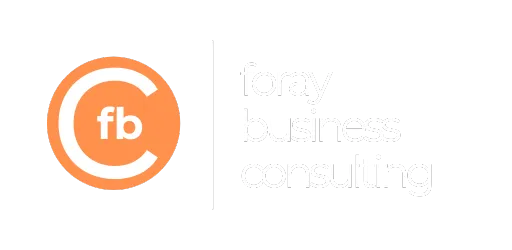
Supply Chain Financing
Supply Chain Financing: Unlocking Operational Efficiency and Growth
Supply chain financing (SCF) is a solution that can transform how businesses manage their working capital and maintain smooth operations. It involves the use of technology-based solutions to automate transactions and provide short-term credit to optimize working capital. This method enables both buyers and suppliers to streamline processes, reduce risks, and improve cash flow, fostering stronger business relationships.
The concept of supply chain finance is crucial for large and small enterprises alike. It allows suppliers to receive early payments on invoices, funded by a financial institution, while buyers get extended payment terms. By doing so, SCF can enhance liquidity and ensure that businesses at every level of the supply chain are financially stable.

We are seeing significant advancements in supply chain finance technology, which facilitates more efficient and faster transactions. Companies now have access to multiple lenders and innovative software that further improve cash flow management. Understanding the operational aspects and benefits of SCF can help businesses adopt it effectively and thrive in an increasingly competitive market.
Key Takeaways
Supply chain finance optimizes working capital and cash flow.
SCF strengthens business relationships between buyers and suppliers.
Technological advancements are making SCF more efficient.
Overview of Supply Chain Financing
Supply chain financing is a critical component in modern trade, linking buyers, suppliers, and financial institutions. It helps improve cash flow and liquidity, ensuring smooth operations along the supply chain.
Defining Supply Chain Finance
Supply chain finance (SCF) involves a series of processes where financial institutions or banks facilitate payments between buyers and suppliers. In this setup, a supplier delivers goods or services to the buyer. Instead of waiting for the buyer to pay, the supplier can receive early payment from a financier at a predetermined discount rate. This arrangement improves the supplier’s cash flow and ensures timely payment.
For example, in reverse factoring, a financial institution pays the supplier on behalf of the buyer. The buyer, in turn, settles the amount with the financer at a later date. This method reduces financial risk for all parties involved.
Importance in Global Trade
Supply chain finance is vital in global trade. It helps exporters and importers manage their cash flow more effectively. By receiving early payments, exporters can maintain liquidity, while importers benefit from extended payment terms.
In international transactions, SCF can bridge the gap between differing payment cycles and terms. This reduces the reliance on traditional credit lines, especially during economic uncertainties. As noted in this guide, SCF has become a key focus area for companies looking to optimize their financial strategies.
Key Actors and Stakeholders
Several key players participate in supply chain financing. The primary actors include the buyer, supplier, and financial institution. The buyer or importer starts the process by receiving goods or services. The supplier or exporter fulfills the order and may then sell the invoice to a financial institution.
The financier or bank then pays the supplier early. The buyer later repays this amount to the financial institution as per the agreed terms. This arrangement involves careful coordination among all parties to manage risks and ensure timely payments. Financial institutions play a significant role by providing the necessary funding and managing the associated risks.
Financial Mechanisms in SCF
In supply chain finance (SCF), several financial mechanisms help improve liquidity and optimize working capital for businesses. These include receivables and payables finance, reverse factoring, inventory finance, and asset-based lending.
Receivables and Payables Finance
Receivables finance is a process that allows companies to sell their invoices to a third party at a discount. This provides immediate cash flow. Businesses do not have to wait for the payment terms to lapse. By using this method, companies can better manage their cash flow and reduce debtor days.
Payables finance works in the opposite way. Instead of selling invoices, companies extend the payment terms with their suppliers. This provides additional time to settle their payables. It helps manage working capital while keeping supplier relationships intact. It's a win-win for both buyers and suppliers.
Reverse Factoring
Reverse factoring, also known as supplier financing, is a financial solution where a third-party financier pays a company’s suppliers early. The financier takes on the receivables at a small discount. This improves the supplier’s cash flow without affecting the buyer's payment terms.
Buyers benefit because suppliers offer better terms or lower prices. Suppliers gain quick access to cash by converting their receivables into immediate funds. This strengthens the relationship between buyers and suppliers. It also ensures smoother operations and supply chain stability.
Inventory Finance
Inventory finance allows businesses to use their inventory as collateral for a loan. This type of financing helps to release capital tied up in inventory. Companies can use this to purchase more stock or improve their cash flow.
With this method, the lender monitors the inventory. The amount that can be borrowed depends on the value of the inventory. It's useful for businesses that have large amounts of stock and need liquidity. By leveraging their inventory, companies can maintain smooth operations and capitalize on growth opportunities.
Asset-Based Lending
Asset-based lending (ABL) leverages company assets to secure loans. These assets may include accounts receivable, inventory, and other tangible assets. This method provides a flexible and scalable source of funding.
Companies can use ABL to meet their liquidity needs. They can expand their business or cover operational expenses. Asset-based loans are typically easier to obtain, especially for companies with substantial assets but limited credit history. ABL ensures businesses can access necessary funds while managing their existing assets efficiently.
By understanding and utilizing these financial mechanisms, businesses can optimize their cash flow and strengthen their supply chain operations. Each mechanism offers unique advantages tailored to different operational needs.
Benefits of Supply Chain Financing
Supply chain financing provides businesses with improved working capital, enhanced cash conversion cycles, and risk mitigation. These benefits are crucial for both buyers and suppliers, making their financial operations smoother and more stable.
Improving Working Capital
Supply chain financing helps improve working capital by allowing businesses to access funds they wouldn't otherwise have. Buyers can extend payment terms, giving them more time to pay invoices. Suppliers receive early payments, improving their cash flow. This win-win situation enhances the balance sheet for both parties.
When cash flow is steady, businesses can invest in growth, pay bills on time, and meet unexpected expenses. Financing through supply chain mechanisms can also lower the cost of capital since the financing costs are often lower than traditional loans.
Enhancing Cash Conversion Cycle
The cash conversion cycle is the time it takes for a company to convert its investments in inventory and other resources into cash flow from sales. Supply chain financing shortens this cycle by providing quicker access to cash for suppliers.
When suppliers are paid early, they can replenish stock faster and keep their operations running smoothly. Buyers benefit too since they can delay their payments without causing financial strain on their suppliers. This improved cycle means better financial health and more efficient operations for all parties involved.
Risk Mitigation
Supply chain financing also helps in risk mitigation. By ensuring that suppliers are paid on time, it reduces the risk of supply chain disruptions. This reliability is crucial for maintaining production schedules and meeting customer demands.
Additionally, the stability provided by steady payments and financial support lowers the financial risks for both buyers and suppliers. Businesses can negotiate discounts and better terms, enhancing their financial position. With predictable cash flow, companies can plan more effectively and avoid the uncertainties that come with delayed payments or financial instability.
Operational Aspects of SCF
Understanding the operational aspects of Supply Chain Financing (SCF) helps businesses optimize cash flow, enhance supplier relationships, and maintain competitive edge. Key components include settlement processes, payment terms, credit terms, interest rates, and the role of financial supply chains.
Settlement Processes and Payment Terms
Settlement processes in SCF involve the method and timing by which payments are made between buyers and suppliers. Typically, payments are accelerated for suppliers, allowing them to receive funds quickly once goods are delivered. These processes usually rely on digital platforms to ensure speed and efficiency.
Payment terms are pre-defined and agreed upon by both parties. For example, a common practice is reverse factoring, where a buyer approves the supplier's invoice, and then a financial institution advances the payment to the supplier. This ensures that even smaller suppliers can maintain liquidity and invest in growth.
Efficient settlement processes not only reduce the risk of late payments but also improve trust and collaboration between buyers and suppliers. This alignment aids in smoother operations and sustained business relationships.
Credit Terms and Interest Rates
Credit terms refer to the conditions under which buyers can defer payments. These terms often include the repayment period and interest rates. In SCF, interest rates are typically lower than those in traditional trade finance due to the involvement of reliable financial institutions and the lower risk associated with transaction-based financing.
Flexible credit terms help buyers manage their cash flow more effectively. They can extend their payment periods without negatively impacting their own liquidity. For suppliers, accessing funds more rapidly helps in meeting operational needs and taking advantage of new business opportunities.
Interest rates are a crucial component, as they determine the cost of financing. A favorable rate can significantly enhance the attractiveness of SCF solutions for both buyers and suppliers, creating a win-win situation.
Role of Financial Supply Chains
The financial supply chain refers to the flow of financial transactions that support the physical supply chain. It includes activities like invoice financing, payment processing, and credit management. In SCF, the goal is to optimize these financial flows to complement the physical flow of goods.
This is achieved through close collaboration between buyers, suppliers, and financial institutions. Tools like digital platforms and real-time data sharing facilitate this integration, ensuring that financial and physical supply chains work in harmony.
By harmonizing the financial supply chain with the physical one, businesses can achieve greater efficiency, reduced costs, and improved cash flow management. This holistic approach contributes to the overall stability and growth of the supply chain ecosystem.
Technological Advancements in SCF
Emerging technologies are transforming supply chain finance (SCF). These changes improve efficiency, enhance transparency, and streamline operations for businesses and finance providers.
Blockchain in SCF
Blockchain technology creates secure, transparent, and immutable ledgers for tracking financial transactions within global supply chains. By using blockchain, we can reduce fraud, eliminate middlemen, and ensure real-time visibility of transactions.
Blockchain helps in creating smart contracts, which automatically execute terms when predetermined conditions are met. These contracts foster trust among parties since they are tamper-proof and self-enforcing.
Furthermore, blockchain’s decentralized nature means there is no single point of failure. This improves the reliability and security of the supply chain finance process, making it easier to manage and trace financial activities globally.
Artificial Intelligence and Predictive Analytics
Artificial Intelligence (AI) and predictive analytics play crucial roles in supply chain financing. AI algorithms analyze vast amounts of data to provide insights, forecast demand, and optimize inventory levels. This minimizes risks associated with supply chain disruptions.
We can use AI to automate approval processes, reducing the time needed for credit evaluations and funding. Predictive analytics helps us anticipate cash flow needs by analyzing historical data and market trends, enabling better financial planning.
Additionally, AI-driven tools enhance decision-making capabilities. They help us identify potential bottlenecks and efficiencies in the supply chain, ensuring a smoother, more cost-effective operation.
Supply Chain Management Software Integration
Supply chain management software integrates various technologies to provide a comprehensive solution for SCF. These platforms connect buyers, suppliers, and finance providers, centralizing data and streamlining communication.
With robust software integration, we can automate processes such as invoice approval and payment tracking. This reduces manual errors and speeds up financial transactions.
Many modern software solutions leverage cloud computing, providing real-time access to financial data from anywhere. This enhances flexibility and scalability, allowing businesses to adapt quickly to changes in the global supply chain landscape.
Moreover, integrated software often includes advanced reporting features, enabling us to monitor performance metrics and make data-driven decisions that optimize working capital and liquidity.
Global and Regional Considerations
Supply chain financing (SCF) varies greatly depending on geographic and market factors. Key considerations include challenges and opportunities in emerging markets, the effects of globalization, and unique aspects of SCF in countries like India and China.
Supply Chain Financing in Emerging Markets
In emerging markets, SCF can help address liquidity issues that small and medium-sized enterprises (SMEs) face. High-interest rates and limited credit availability often constrain these businesses. By integrating into a global supply chain, SMEs can attract better financing terms. Cross-border financing is particularly beneficial for firms that are otherwise overlooked by institutional investors.
However, the infrastructure for SCF might not be as developed. Platforms and technologies used in developed markets might not be available or feasible. Our focus should be on building local capacities that can support these financial mechanisms. Regulatory support is also crucial in boosting confidence among investors and financial institutions in these regions.
Impact of Globalization on SCF
Globalization has amplified the reach and complexity of supply chains. This has led to increased demand for cross-border financing solutions. SCF has become integral to maintaining the flow of goods and capital. The formation of global supply chain partnerships leads to more usage of financing through equities, loans, and public debt.
Nevertheless, globalization also brings geopolitical risks. Tariffs, trade wars, and political instability can disrupt supply chains. To mitigate these risks, we must develop flexible SCF solutions that can adapt to these uncertainties. Moreover, financial resiliency should be a priority, especially given the lessons learned from the pandemic.
Specifics of SCF in Markets like India and China
India and China are pivotal players in global supply chains. In India, SCF can alleviate some of the liquidity pressures on SMEs. Government initiatives like MSME (Micro, Small, and Medium Enterprises) financing schemes aim to improve financial inclusivity. However, inefficiencies still exist in how assets are financed.
In China, SCF has a more structured framework, supported by robust domestic financing systems. The global supply chain partnerships that Chinese firms establish make cross-border financing more attractive. Still, the market faces challenges related to regulatory complexities and compliance with international standards.
Challenges and Complexities in SCF
In supply chain financing (SCF), we face numerous challenges and complexities that hinder smooth operations. Key issues include managing financial risk and compliance, navigating supply chain disruptions, and the complexity of cross-border transactions.
Managing Financial Risk and Compliance
Managing financial risk in SCF is essential. Companies must tackle issues like credit risk, liquidity risk, and regulatory compliance. Financial institutions often demand stringent documentation and adherence to regulatory requirements, making compliance a significant challenge.
We need to monitor the financial health of suppliers and buyers continually. This involves conducting regular financial assessments and setting strict credit limits to mitigate risks. Failures in compliance can lead to hefty fines and damage to reputation.
Moreover, we should leverage technology to automate compliance processes. This helps in maintaining accurate records and ensuring that all transactions meet the required standards.
Navigating Supply Chain Disruptions
Supply chain disruptions significantly impact SCF. Factors such as natural disasters, geopolitical tensions, and pandemic outbreaks pose substantial risks. These disruptions can lead to delays in shipments, affecting cash flows and liquidity management.
We must develop robust contingency plans. This includes diversifying our supplier base and creating stockpiles of essential materials. By doing so, we can reduce the impact of unexpected disruptions.
Additionally, using real-time data analytics helps us anticipate and respond to potential disruptions. Tools like predictive analytics enable us to make informed decisions, ensuring continuity in our supply chains.
Complexity of Cross-Border Transactions
Cross-border transactions add another layer of complexity to SCF. These transactions involve different currencies, regulatory environments, and taxation systems. Handling currency fluctuations and regulatory compliance across multiple countries can be daunting.
To manage these complexities, we must engage with reliable trade finance partners. These partners can provide tools such as letters of credit and export insurance, ensuring smoother transactions between exporters and importers.
Also, understanding the legal and regulatory frameworks in different countries is crucial. We should invest in expert advice and robust systems to ensure compliance with international trade regulations.
By addressing these challenges with effective strategies and tools, we can overcome the obstacles in supply chain financing and ensure smoother, more efficient operations.
Strategies for Effective SCF Implementation
Effective supply chain finance (SCF) implementation involves collaboration with supply chain partners, optimizing working capital, and choosing the right financing options and partners. These strategies can help improve cash flow, build trust among participants, and ensure the sustainability of the supply chain.
Collaboration with Supply Chain Partners
Developing strong relationships with suppliers is crucial. Collaborative technology platforms facilitate seamless communication and build trust. Using cloud-based solutions and blockchain technologies ensures transparency across the supply chain.
We must engage our suppliers early and inform them about the benefits of SCF. Training sessions and dedicated support teams can help suppliers understand and adopt the new systems. Ensuring organizational support from senior-level executives can further reinforce the importance of these initiatives.
Optimizing Working Capital through SCF
SCF helps buyers extend payment terms while allowing suppliers to receive early payments. This improves cash flow for both parties. For buyers, extending payment terms frees up cash, enhancing liquidity. For suppliers, early payment options reduce financing costs and improve days sales outstanding (DSO).
Reverse factoring is a common SCF method. It leverages the creditworthiness of the buyer to offer better financing terms to suppliers. This approach aligns the interests of both buyers and suppliers, ensuring mutual benefits. Regularly reviewing and adjusting payment terms based on market conditions can further optimize working capital.
Choosing the Right Financing Options and Partners
Selecting the right financing options and partners is critical. We should evaluate different SCF solutions like factoring, reverse factoring, and dynamic discounting to determine which best fits our supply chain needs. Consider the specific requirements of our business and supply chain partners when deciding.
Partnering with reliable financial institutions provides the necessary support and expertise. Financial partners' stability and technology capabilities can influence the success of SCF programs. Organizational backing from the C-suite can ensure smooth implementation and ongoing success. Ensuring clear agreements with all parties involved helps maintain trust and smooth operations.
Trends and Future of Supply Chain Financing
In supply chain financing (SCF), trends are evolving rapidly due to changes in commodity prices, economic cycles, and new SCF models. Businesses must stay informed to remain competitive.
Influence of Commodity Prices on SCF
Commodity prices can greatly affect supply chain financing. When prices rise, it often leads to higher costs for purchasing and transporting goods. This increases the need for efficient financing solutions. In contrast, when prices fall, companies might experience reduced turnover and revenue.
Large fluctuations in prices can lead to volatility in the market. To manage this, companies often rely on commodity trade finance. This helps in stabilizing their cash flow and meeting their working capital needs. We see more firms adopting dynamic discounting to quickly adjust their finances according to price changes.
Impact of Economic Cycles on SCF Strategies
Economic cycles play a crucial role in shaping SCF strategies. During economic expansions, businesses generally experience increased demand and growth opportunities. This can lead to higher volumes in trade finance transactions. However, during recessions, companies often face liquidity issues and reduced credit access.
Adaptive SCF strategies become essential in these situations. For example, financing options that offer flexibility in repayment terms can help businesses maintain stability. Additionally, firms may turn to alternate financing methods, such as factoring and invoice discounting, to manage cash flow during cyclical downturns.
The Evolution of SCF Models
The evolution of SCF models is transforming how businesses manage their finances. Traditional methods like letters of credit are gradually being replaced by more advanced solutions. One notable trend is the shift towards open-account trading, which offers increased transparency and reduced transaction times.
Newer models provide better integration with digital platforms, streamlining processes, and improving efficiency. Technologies such as blockchain are also being explored to offer more secure and traceable financial transactions. As SCF models continue to evolve, companies that adapt quickly will benefit from improved working capital management and stronger supplier relationships.
For more on these evolving trends, you can view the detailed insights from International Banker.
Frequently Asked Questions
Supply chain financing provides several ways to help businesses manage cash flow, grow, and reduce financial risks. Let's explore the key aspects in detail.
How does supply chain finance support businesses in managing their cash flow?
Supply chain finance helps businesses by allowing suppliers to get paid early for their invoices. This means suppliers have more cash on hand, avoiding delays in payment from buyers. Buyers can pay later, helping them to hold onto their cash longer without disrupting the supplier's cash flow.
What are the advantages of using specialized supply chain financing companies?
Specialized companies provide expertise and tailored solutions. They help optimize working capital, reduce costs, and manage risks efficiently. For instance, PrimeRevenue's customers improve working capital by over 200 million dollars. Their services often include digital platforms that streamline the financing process.
In what ways do supply chain financing and factoring differ?
Supply chain finance focuses on giving suppliers early payment based on the buyer's creditworthiness. Factoring involves selling invoices to a third party to get paid sooner. In supply chain finance, the buyer arranges financing, while in factoring, the supplier initiates the transaction.
Can you provide an example that illustrates how supply chain finance is utilized in practice?
A large retailer, for instance, might use supply chain finance to pay its suppliers early through a financing company. This allows the suppliers to get their money quickly, while the retailer can hold onto its cash for a longer period. This setup benefits both the retailer and the suppliers by improving their cash flow and business operations.
What are the common types of supply chain finance instruments available?
Common instruments include reverse factoring, dynamic discounting, and invoice discounting. Reverse factoring allows suppliers to receive early payments at favorable rates. Dynamic discounting lets buyers and suppliers agree on early payment discounts. Invoice discounting involves borrowing against accounts receivable without selling the invoices.
How does supply chain finance differ from traditional trade finance methods?
Supply chain finance focuses on optimizing the cash flow between buyers and suppliers within the same supply chain. Traditional trade finance addresses broader international trade issues, such as letters of credit and trade credits. Supply chain finance provides more flexibility and uses digital tools to streamline processes, different from the more rigid and paperwork-heavy traditional trade finance methods.
GET FUNDED IN 1-2-3 EASY STEP
Checking your rate won’t affect your credit score

Apply Online
- Fast & Easy Online Application Our loan specialist will contact you Or call us at our phone number: (905) 594-1139

Review Your Options
-You will have your decision in minutes. No paperwork, no waiting

Get Funded
- True term loans – $5,000 – $1,000,000 Receive funding in as fast as 1 day
Foray Business Consulting © | ALL RIGHTS RESERVED | LOANS SUBJECT TO LENDER APPROVAL
The operator of this website is NOT a lender, does not make offers for loans, and does not broker online loans to lenders or lending partners. Customers who arrive at www.foraybusinessconsulting.com are paired with a lender or a lending partner, and redirected only to lenders or lending partners who offer business loan products.

